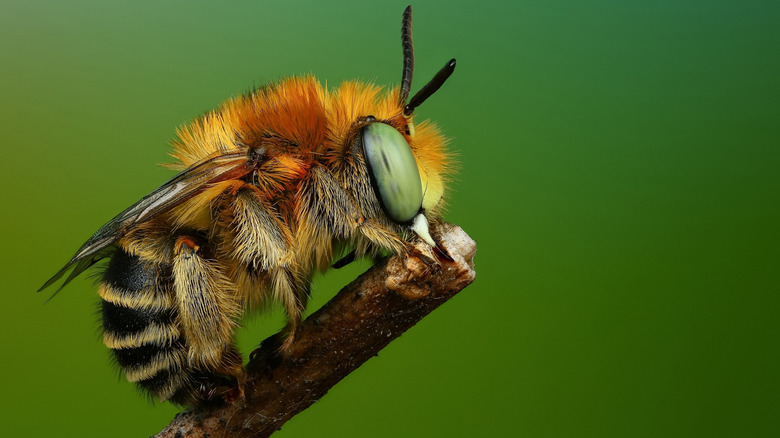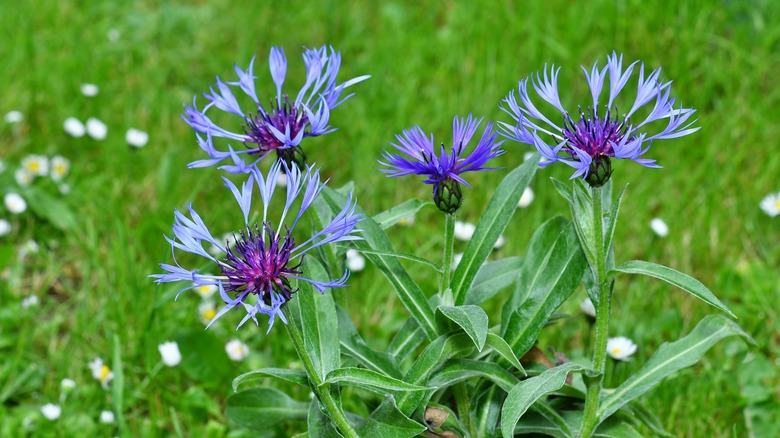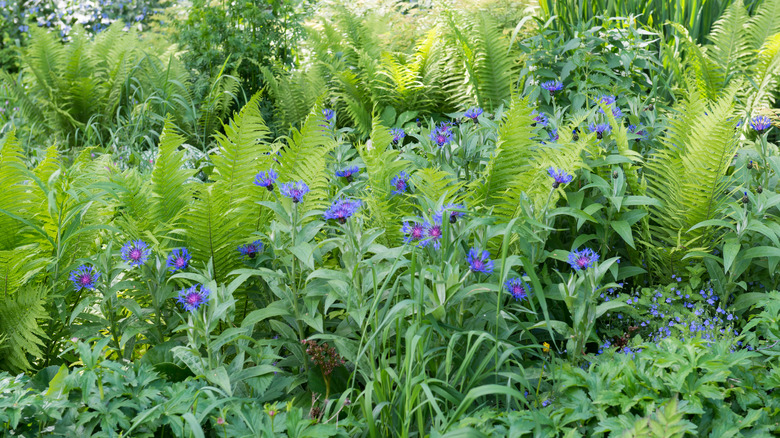Attract Pollinators To Your Garden With This Unique Spring Perennial
You can never have too many pollinators in a garden. There's something special about seeing pollinators buzzing and fluttering around flowers in the spring; it's a great reminder that the cold is over, and it's time for the earth to wake up. Many pollinator gardens are filled with annuals like zinnias and marigolds, but if you want to change things up a bit with some flowering perennials, try the mountain cornflower (Centaurea montana).
The mountain cornflower is known by several names, including perennial cornflower and mountain knapweed. The flower is related to the bachelor's button, a common flower in wildflower mixes but it's a different species. However, some call this flower a perennial bachelor's button. Should you confuse it with the bachelor's button, you can tell them apart by the mountain cornflower's clumping growth habit that allows it to come back each year. With this gorgeous perennial in this garden, you can count on pollinators stopping by every spring.
Growing the mountain cornflower
Growing mountain cornflowers is easy since they don't ask for much. When given the proper growing conditions, they're a low-maintenance flower that you probably won't even have to think about. They need full sun exposure, so plant them in an open area away from trees and buildings so they can soak up the rays for most of the day. These flowers quickly spread since they propagate by seed and stolons.
Stolons are stems that grow along the ground and develop roots to form new plants. If you allow the cornflowers to spread at will, you'll likely end up with a field of them within a few years. If you don't want them to spread, divide them every few years and remove flower heads before they drop their seeds after blooming. The Washington State Noxious Weed Control Board doesn't list them as a noxious weed, but they are on the monitor list, meaning that they're being watched for invasive behaviors.
Established mountain cornflowers thrive with very little water in poor soils. They're forgiving of droughts and skipped fertilizer applications, making them an easy-to-care-for plant, which is ideal in areas that struggle to receive enough rain. If you find it difficult to keep pollinator gardens happy, use this plant to bring more pollinators to your garden.
Add this cornflower to your pollinator garden
A pollinator garden full of spring-blooming perennials will help nature's early risers survive. The mountain cornflower thrives in USDA zones 3 to 8, so it can withstand cold and hot temperatures pretty well. If you live in a hotter climate, try giving it some afternoon shade since it doesn't do well in intense heat for prolonged periods. The plant will attract predominantly butterflies and bees, but you'll likely see many other pollinators and beneficial insects stop by on these wide flowers.
The flowers have thin, wispy petals and are typically blue with purple centers. Medium to deep green foliage makes the flowers stand out and will keep some color in your garden for most of the year. The plants reach 1 to 2 feet tall with similar spread, so you can easily tuck them between plants to fill up space in a landscape. Keep in mind that they can spread by stolons, so you may want to divide them each year if they have to share space with other plants.


